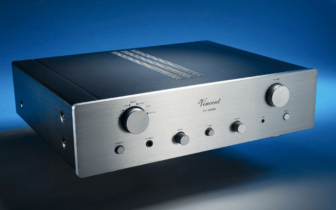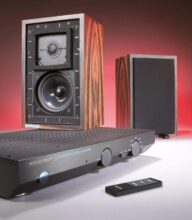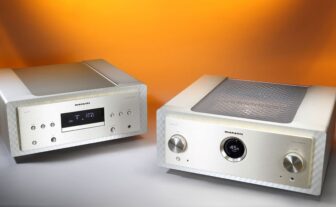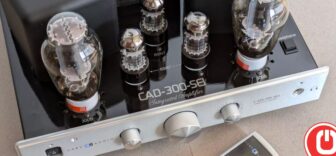Musical Fidelity A1 Integrated Amplifier Review
First introduced in 1985, the Musical Fidelity A1 has always stood out: it was nonconformist and, as a Class-A amplifier with low power output, it ran pretty hot. It’s cool that it’s now available as a limited edition. Tested at 1,600 euros.

Quirky, legendary, slim, and simply iconic. That’s how you could sum up the original A1 with its simple volume knob. It’s a unique integrated amplifier with a distinctive pentagon design and a fantastic music machine that delivers a rich, flowing sound, especially for speakers that don’t demand much.
But where there was light, there was also shadow. A1 insiders talk about the “legendary British build quality,” which meant that no two units were identical. Plus, the high heat output of the Class-A amplifier accelerated the aging process of the capacitors and often caused the input selector to fail.
In short, the HiFi legend A1 was a brilliant creation but always had room for improvement. The following “X” and “David” versions in the late 1980s and early 1990s didn’t change much, nor did the somewhat half-hearted 2009 remake with a display, which no longer featured “true” pure Class-A technology.
Back to the Roots. But Better
Musical Fidelity CEO Heinz Lichtenegger, who has personal memories associated with the A1, didn’t want to miss the chance to revive the legendary amplifier in a special series limited to 1,985 units.
In terms of looks, the new model closely resembles the distinctive original from 1985. The Austrians reportedly went to great lengths to preserve the original circuit design by legendary developer Tim de Paravicini, which was inspired by tube sound, while replacing key components with modern equivalents that have a longer lifespan. Therefore, the signal path now contains carefully selected transistors and polypropylene capacitors. Other improvements include a higher-quality transformer. In short, the circuit layout remains as faithful to the original as possible.
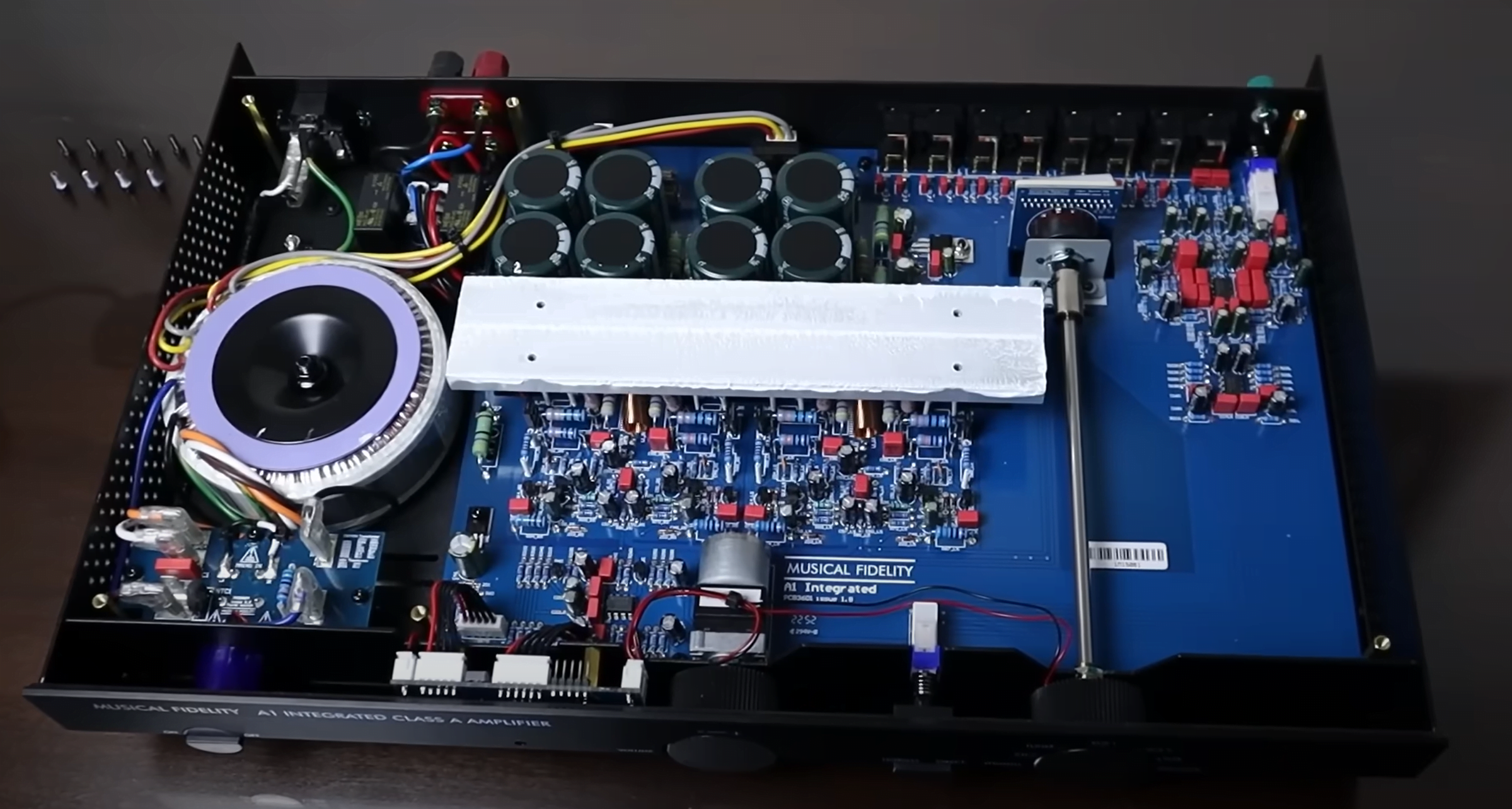
The reissue is priced at an attractive 1,600 euros (the predecessor from 2008 already cost 1,500 euros).
In addition to five high-level inputs (previously four), today’s A1 features a switchable phono input for moving magnet (MM) and moving coil (MC) cartridges. The phono stage includes a low-noise current/voltage converter for further amplification and RIAA equalization, as well as automatic input impedance matching for MC systems.
So, in terms of connections, the new A1 is well-equipped for the current demands of HiFi enthusiasts. But does that also apply to its amplification technology? Does it still run in sweat-inducing Class-A mode with low wattage?

Yes! And to ensure it runs more reliably than before, the 2023 version is built about 3 centimeters deeper than the original. This increases the surface area and improves heat dissipation. However, music lovers should still keep the remake away from tight racks or closed cabinets.
At the High-End 2023 show, Musical Fidelity unexpectedly presented a speaker—a custom version of the legendary BBC LS3/5A design. Since this closed two-way box has a very high impedance of 15 ohms, it proves to be an ideal partner for the A1. Musical Fidelity’s CEO Heinz Lichtenegger was particularly fond of this combination, as he sold it frequently during his time as a HiFi dealer in Vienna. As a bundle, the amplifier (1,600 euros) and the speakers (2,500 euros) are even more attractively priced at just 3,800 euros.
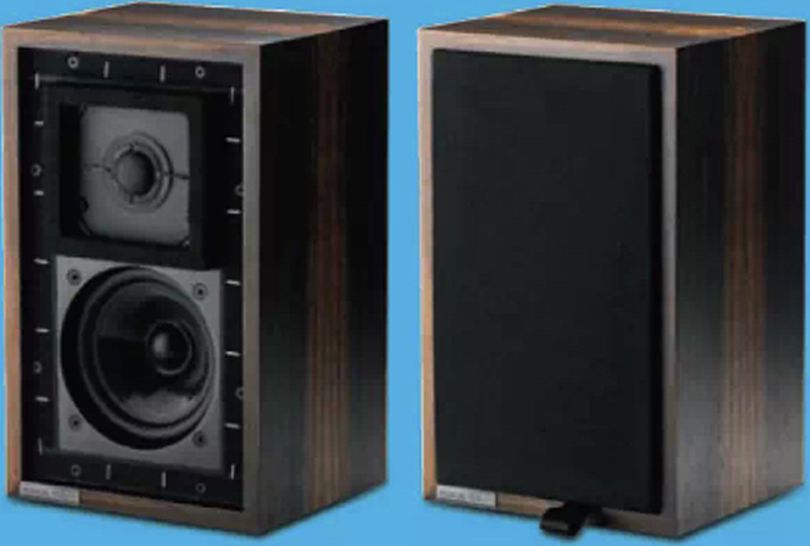
It’s worth noting that our test unit did not feel dangerously hot during operation, where the high idle current is converted into music rather than just heat. However, the author wouldn’t recommend placing his favorite LPs on the constantly powered A1. Beyond that, the unit impressed with good build quality and durability: all plastic switches and controls had a solid feel and performed flawlessly during extended use.
Extremely High Voltage Resistance on the Line Input
And what did the measurements reveal? Our colleague Florian Goisl determined a sine wave power output of 22 watts at 4 ohms for the Musical Fidelity (for comparison, the old A1 managed just under 15 watts). But we also noticed two other things: first, the MM phono frequency response showed an unusual rise of 3 dB between 10 and 20 Hz; second, the line input proved to be extremely voltage-resistant, handling values above 10 volts, which is very unusual.
Why is that? It could be explained as follows: the A1’s preamp, like a guitar amplifier, allows for high gain (also known as “drive”). And the more the Musical Fidelity amp is driven, the more harmonic distortion it produces with even-order harmonics. Many music fans perceive these distortions as “exciting” and characteristic of the A1 sound.
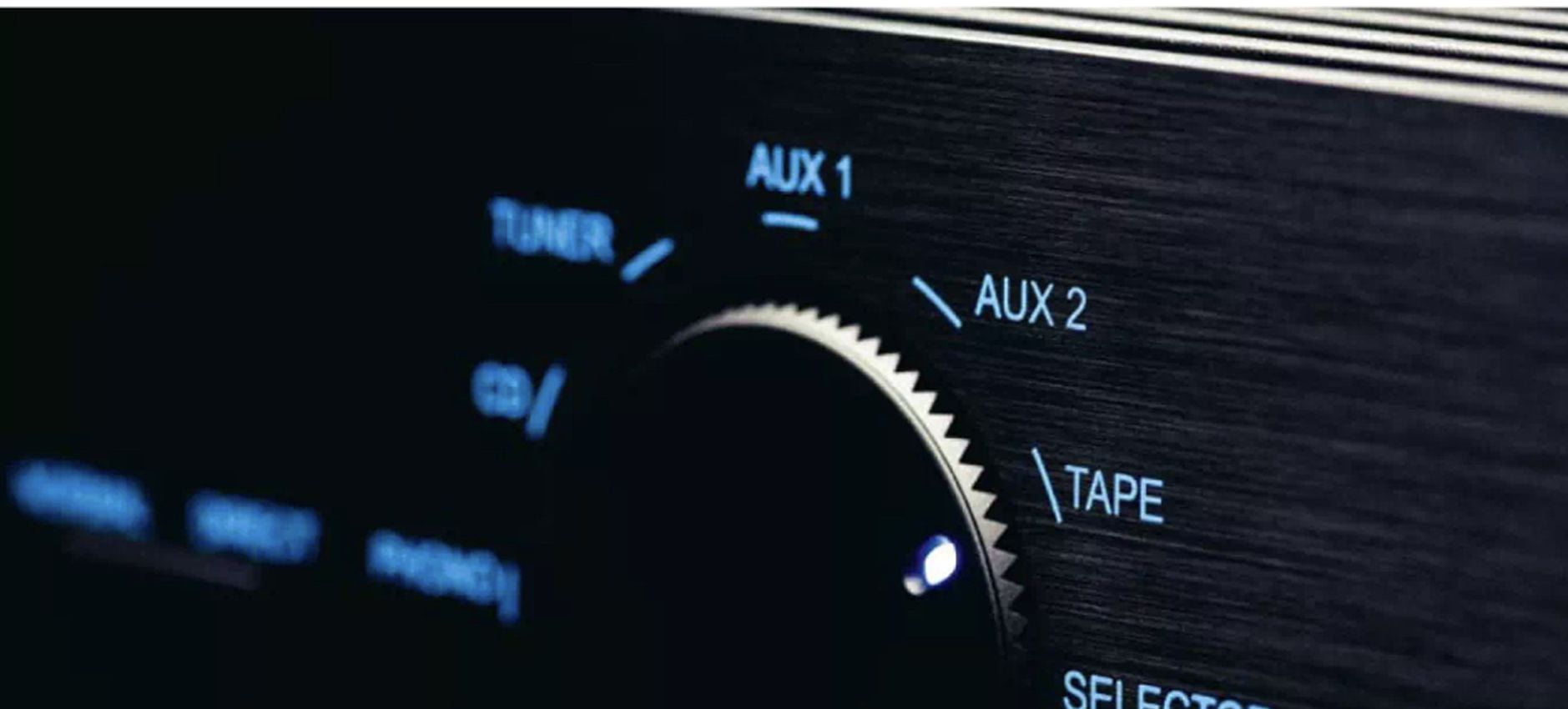
For those who prefer to avoid this kind of distortion, the Direct switch on the front of the A1 can be activated. This ensures that the music signal is sent directly to the volume control before reaching the power amp section.
In combination with the Effi speakers from Pure Dynamics featured in this issue, but also with the “dream partner” LS3/5A, the unique characteristics of the A1 amplifier were clearly noticeable: the Direct mode sounded generally more delicate, cleaner, and more transparent; the normal mode with activated gain was a bit “grittier” and more “engaging.”
Anyone who wants to try out this effect should be aware of the significant volume difference, as bypassing the gain stage results in a -10 dB drop!
Since the author wasn’t historically biased, he preferred the Direct mode. But not just in this mode, the new A1 enchanted with an incredibly coherent, colorful, and natural sound that reminded one of good tube amplifiers—and it didn’t matter that there’s still room for improvement in terms of resolution, precision, and bass power.
Fortunately, the phono input maintained the high overall standard and performed particularly well in MC mode. Even the entry into the beautiful LP “Declaration of Dependence” by the Norwegian folk duo Kings of Convenience showcased all the strengths of the Musical Fidelity like under a magnifying glass: wonderfully tangible vocals, incredibly gripping guitar sounds, and a musical flow that nearly eliminated the desire to connect another amp for comparison.
“This is what music sounds like, not HiFi,” the author thought time and again, though he eventually mustered the energy to compare it with the Exposure 3510 INT, noting the aforementioned “weaknesses.” Whether the competitor from Great Britain, which costs about 1,000 euros more, resolves higher and delivers more dynamic impact, ultimately plays more compellingly is another question. In any case, it’s well worth searching for the “right” speaker partner for the new Musical Fidelity A1.

Specifications
Dimensions (WxHxD): 44.0 x 6.8 x 28.3 cm
Weight: 10.5 kg
Amplifier Compatibility Diagram
Delivers a consistent 30 W music power output into 8 to 3 ohms, making it ideal for high-efficiency speakers or small rooms.
Voltage (8 ohms): 15.1 V
Frequency Response: 1.3 dB
Current (3 ohms): 2.9 A
Measurements
Sine Wave Power (1 kHz, k = 1%)
- At 8 ohms: 30 watts
- At 4 ohms: 22 watts
Music Power (60 Hz Burst)
- At 8 ohms: 30 watts
- At 4 ohms: 31 watts
Signal-to-Noise Ratio
- Line (10 V at 8 ohms): 93 dB
- Phono MM/MC (10 V, 1 kΩ/10 ohms): 80/64 dB
Power Consumption
- Standby/Operation: 0.2/93 watts
Measurement
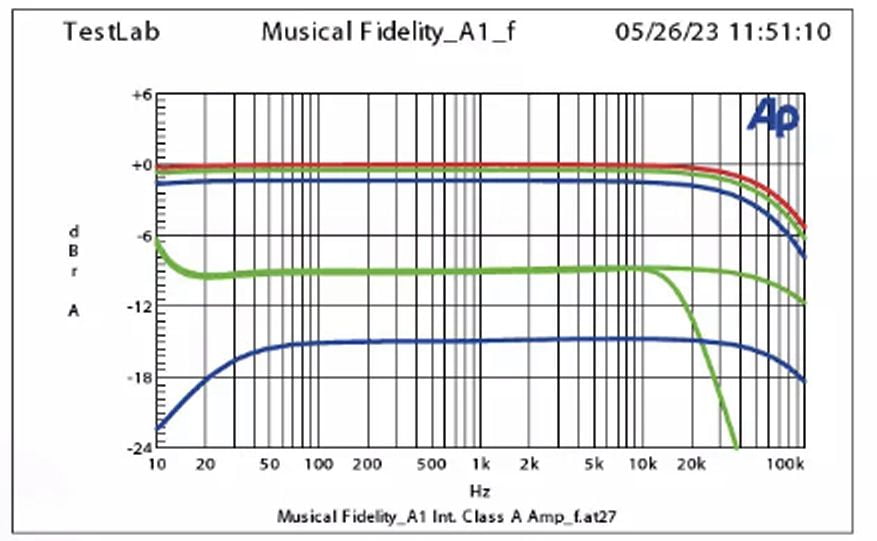
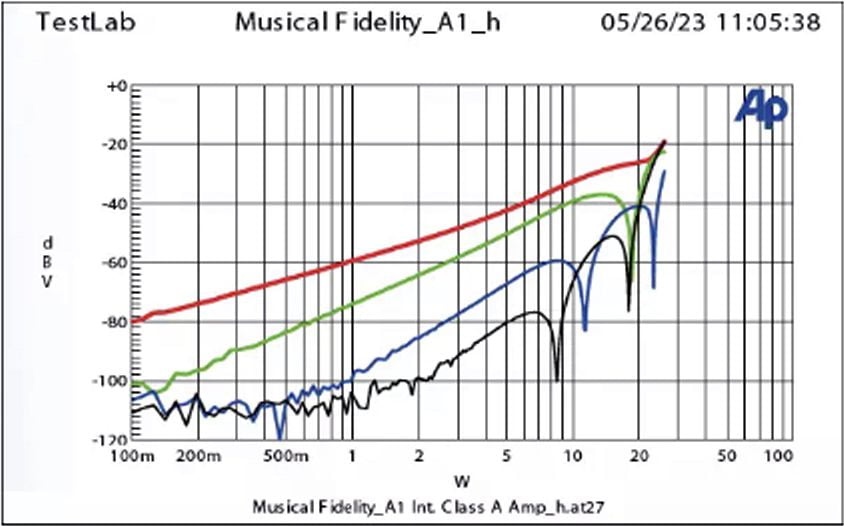
Verdict
Heat and power—these were the themes that often surrounded the A1. There was too much of the former and too little of the latter. With the reissue of the legendary “waffle iron,” Musical Fidelity has fortunately addressed both challenges.
In our test, which was not a long-term test, the new A1 seemed more refined technically and remained stable despite the still significant heat generation. Added to that is nearly 50% more power, a good-sounding phono input, and a wonderfully coherent sound that makes the current A1 something special. Fans and collectors should hurry, given the limited number of units available.
- Build Quality: 10/10
- Practicality: 8/10
- Sound Quality (Top Class): 52/60/70
When you purchase through links on our site, I may earn an affiliate commission. Here’s how it works.
Musical Fidelity A1 Amplifier, A KNOCKOUT!
Class A amplifiers can be expensive, but the Musical Fidelity A1 is solidly affordable! My Heaven 11 Billie review ...
PURE CLASS A HEAVEN ! (New) Musical Fidelity A1 Amplifier Review
The A1 is arguably Musical Fidelity's most famous amplifier. Almost 40 years after the original, how good can the new version be?





